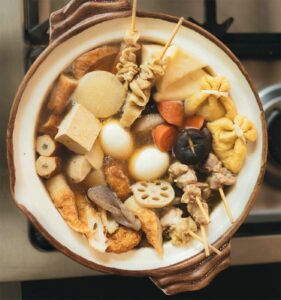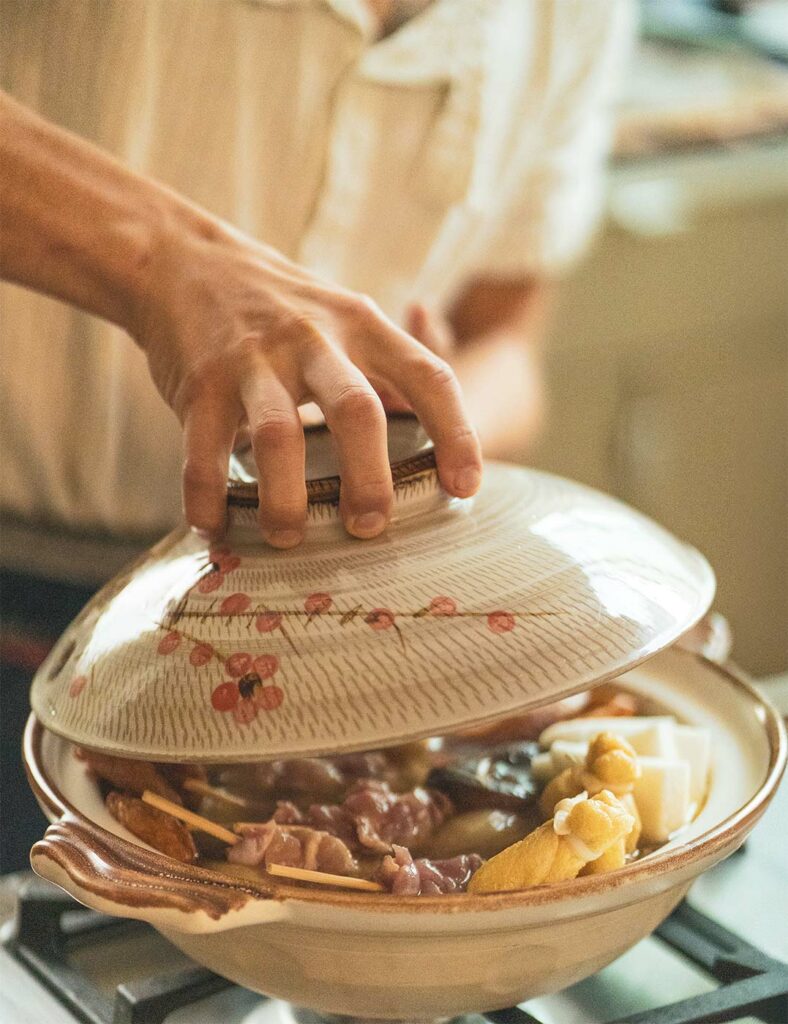
Warmth, nourishment and a little taste of home
In Japan, hugging feels even less common than it is here where the “Seattle Freeze” prevails.
Luckily, Japan has given us something else that still communicates all of the warmth and care of a hug: oden. Pronounced “oh-DEN,” oden is a soup, eaten throughout the winter in Japan, when a sweater and a hot cup of tea just aren’t enough to stoke the internal coals.
I grew up watching my dad fill one stock pot to the brim with ingredients, only to transfer half of the contents to a second pot for lack of space. He would then fill both of the pots with broth. Our family of four would struggle to make a dent in the first pot of oden.
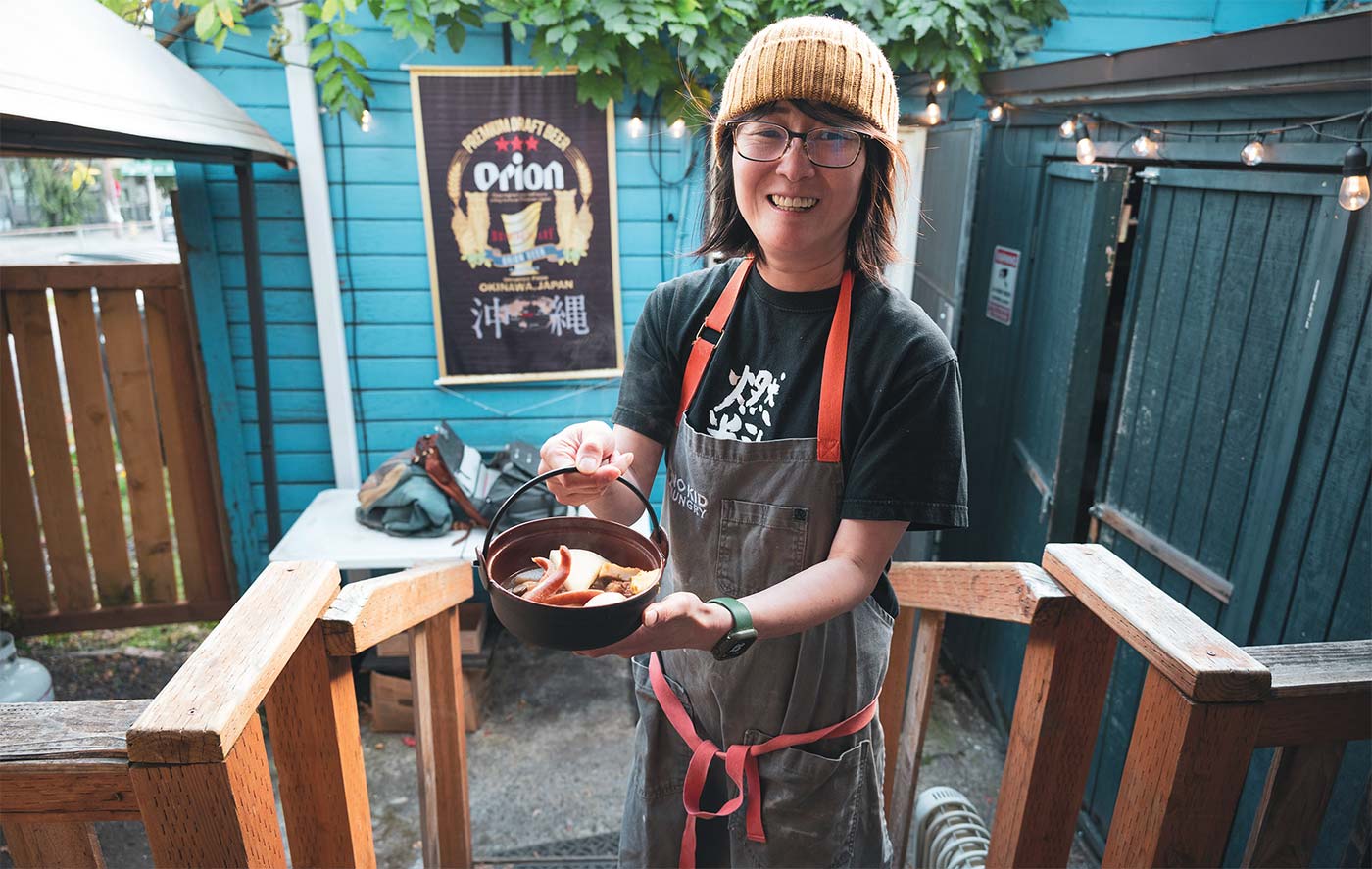
ODEN IS WHAT YOU MAKE IT
As with many stewed dishes, the soup grows more flavorful by the day. If you only make enough for one sitting, you inevitably deprive yourself of the leftovers. We relished the leftover oden for days, topping it up with broth as needed. While it was typically a family affair, certain occasions warranted the double pots. The first blustery night of fall when it felt as though you’d never be warm again, or New Year’s Eve when a swarm of friends showed up for nourishment before an evening of galavanting, New Year’s Day when the follies of the night before rendered us weak and in need of coddling, the first winter I brought home my then-vegan girlfriend who I would one day marry—all call for a hot bowl of oden, even if it is made vegan-friendly.
While there are as many regional variations for oden as there are words for tuna in Japanese (spoiler alert: there are several), the concept is largely the same recipe to recipe. A large stock pot or high-walled pan is filled with a simple broth of dashi, soy sauce, sake and mirin. The pot is then filled with distinct floating ingredients that bob invitingly in the broth. The typical choices include daikon radish, taro root, boiled eggs, a variety of fried fish cakes, lotus root, konnyaku (konjac) and beef tendon. These additions hold their forms and personalities within the broth as it simmers.
Conversely, certain ingredients excel at absorbing the flavors of the broth, such as tofu. When eating oden, you simply pick your favorite bobbing pieces and place them in a bowl with a healthy ladleful of broth. While daikon is always plentiful, certain additions—such as mochi-stuffed fried tofu—are coveted and may provoke arguments between siblings. I didn’t often win these duels growing up, perhaps the reason I learned how to cook the soup for myself.
Spicy yellow mustard, called karashi, is often spread along the rim of the bowl for piquancy. It is common while eating oden to accidentally over-apply this incendiary condiment and suffer the sharp pang of “mustard-nose,” a sensation similar to eating too much wasabi.
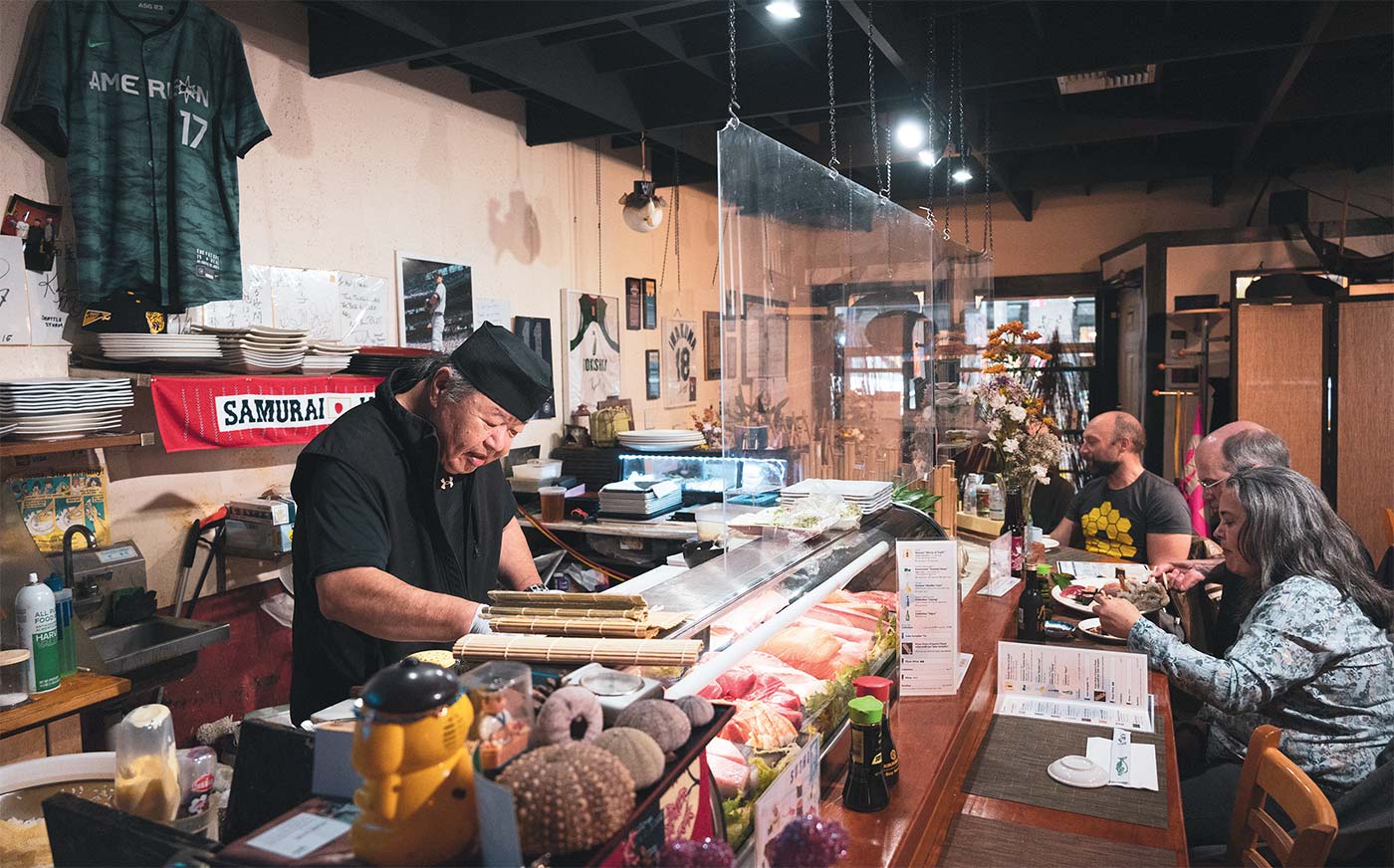
ODEN IS A BIT OF HOME
After high school, I moved to the industrial port city of Toyohashi in central Japan for a year, taking a grown-up job mixing plaster. To my delight, I found that oden was everywhere—I could find the warmth and comfort of home in the unlikely aisles of 7-Eleven.
Unlike the ubiquitous displays of taquitos and corn dogs at the convenience stores in the U.S., Japanese convenience stores offer many seasonally specific foods. In the blooming of spring, there are cherry blossom desserts. In the dragging heat of summer, they fill the cases with specialty cold noodle sets. In fall when the chestnuts are ready, they too appear on the shelves.
When the oden banners went up in front of Lawson’s or Family Mart, it signaled the coming of cooler months. Far from home and family, I was comforted that I could spend a few dollars on a hot bowl of soup to warm my numb fingers. I could be transported home, the fluorescent lights of 7-Eleven reflecting on the snow, glowing like Christmas lights.
While convenience store oden can hit the spot, there are specialty oden shops across the country. Fuyacho Uneno in Kyoto is an oden restaurant that operates out of the back of a historic dashi shop. The basis for their broth is dashi: a stock of kelp, smoked fish or shiitake. This particular shop is famed for their curated selection of kelp from northern Japan and hand-shaved smoked bonito from the south. They use their dashi to create delicate pairings, selecting additions such as tenderized octopus, winter melon or, unconventionally, caciocavallo cheese. Some restaurants make a point of reusing their dashi day after day, soaking up the flavors from the myriad ingredients that float in it. Otafuku in Tokyo has strained and replenished their dashi since as far back as 1945. While these restaurants provide an exceptional bowl of soup, the soup at any corner oden shop is often all you need.
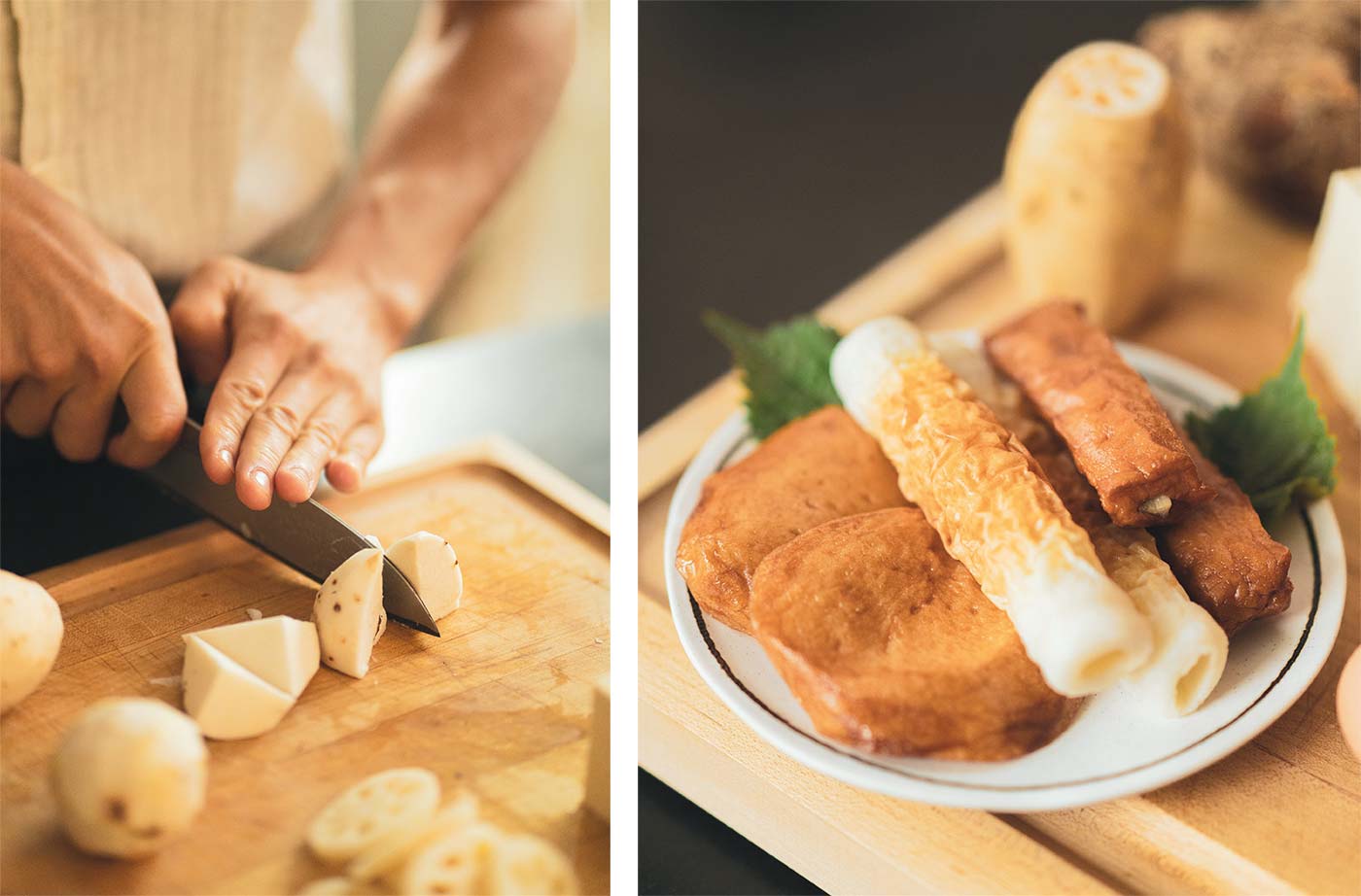
ODEN IS FOR EVERYONE
After my year in Japan, I came back to Seattle right as my parents moved out of the city. I no longer had a nearby place to sate my craving for oden. Thankfully, there are several restaurants in Seattle where one can cuddle up to a stellar bowl of soup.
Shiki in Queen Anne has been serving oden for 20 years. Up until a few years ago, they served it only during the winter.
“People started showing me photographs on their smartphones asking if we have what was in the picture,” says chef and owner, Kenji Yamamoto. “They would ask all year-round for it, so now we do it all year-round. We have people order it every day.”
The oden at Shiki comes in a large clay pot, stuffed to the brim with daikon, righteously tender beef tendon, boiled eggs and several types of fried fish cakes: some stuffed with burdock root, pickled ginger or purple potato.
“My favorite is the beef tendon,” says Yamamoto, “but my wife loves the eggs, or maybe the daikon. Or is it fish cakes?” I’m sure the right answer will come to him.
From September to April, anyone can enjoy a bowl of oden at Hannyatou in Wallingford. The oden here contains many of the typical ingredients, and some more unusual, like octopus-shaped Kurobuta sausages.
“For our soup, we use niban dashi from Kamonegi, so our broth is pretty strong and good,” says chef-owner Mutsuko Soma. Kamonegi is their sister restaurant next door, specializing in handmade soba noodles. Niban dashi, meaning “second dashi” is the second steeping of a dashi’s ingredients, which produces an umami-rich broth, albeit a little mellower than the first (ichiban) dashi. Hannyatou is known for its wide selection of Japanese sake and foods that pair with it, oden being no exception.
“Fish cakes are amazing with sake, daikon is a perfect palate cleanser and then I like finishing with egg,” says Soma. “People should enjoy oden with hot sake. It makes me feel like wintertime is coming and that I want to warm up with hot sake.”
Makoto Kimoto, of Tamari Bar and Rondo on Capitol Hill, prefers his oden with a Japanese whisky highball instead of the more traditional sake. Both Tamari Bar and Rondo serve oden in the cooler months. Kimoto likes to rotate ingredients on offer in his oden, sometimes adding chicken skin, yuba (soy milk curds), or mochi-stuffed fried tofu. Customers also have the option to choose their items for their oden, which is typically how it is served in Japan. This winter, Kimoto is even planning an oden-themed special event.
“The purpose of the event is to just have fun with our great staff and customers,” says Kimoto. “We’ll create a special menu only for this event.”
Coincidentally, Kimoto grew up a stone’s throw away from my dad in the provincial fishing town of Obama, Japan. Kimoto has fond memories of his dad spending all day laboriously making oden from scratch, from the dashi to the fish cakes. My dad may not have made his from square one, but it is the best oden I know of and it takes a fraction of the time. The daikon are always tender, and the texture of the hard-boiled egg yolks change by the day. The thing that each oden variation has in common: the power to make one feel loved and at home. You’ll radiate the heat from the piping hot daikon and the spice of the mustard well into the following day. While I relish the coming of spring, there is a giddy excitement for the cold winter months, as it heralds the pleasure of steaming soup shared with friends and family. I find making a pot of oden to be like building a fire: the more logs you put on, the greater the blaze. The more hands cradling warm bowls, the tastier the soup.
DID YOU KNOW?
The word oden is a truncation of the word dengaku with the honorific prefix “o-” denoting politeness or reverence. The skewered tofu of oden’s early iterations resembled instruments known as dengaku used by dancers during the annual performances to pray for bountiful harvests. The dish has evolved over time, but the name stuck.
